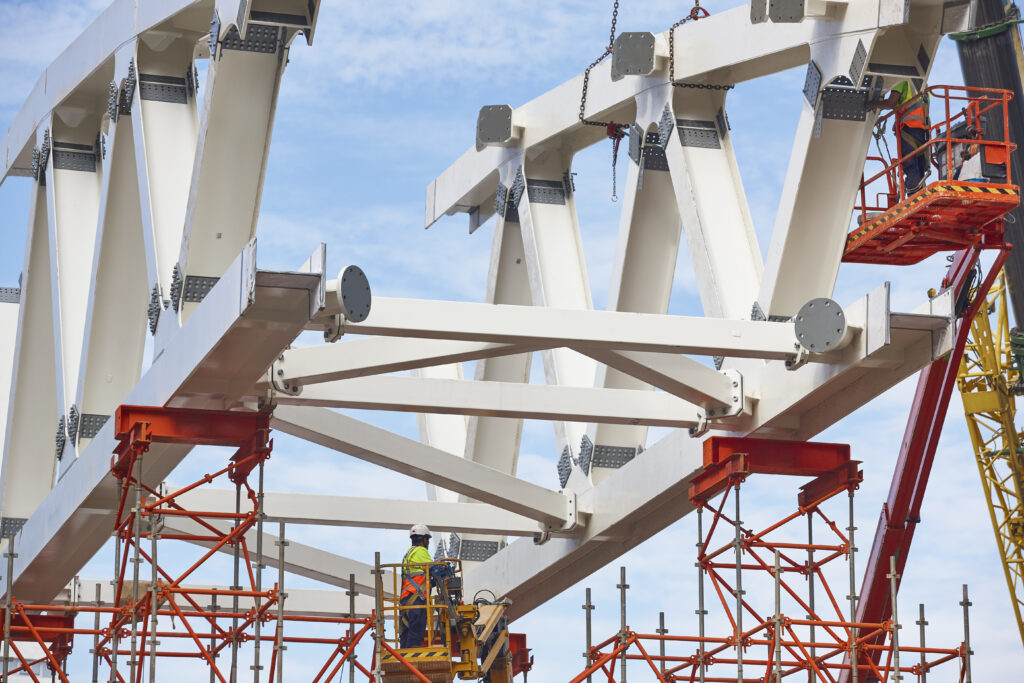Introduction
Urban resilience initiatives have become a defining focus for policymakers and global investors as cities face mounting challenges from climate change, population growth, and infrastructure stress. Across the world, nations are investing in sustainable city planning, renewable energy systems, and climate adaptation projects to enhance their ability to withstand economic and environmental shocks. These large-scale efforts reshape urban landscapes and have significant ripple effects across global financial systems.
The connection between these initiatives and the forex market is particularly noteworthy. As countries implement green infrastructure projects or adopt sustainable urban models, they influence trade flows, government spending, and investment confidence—all of which affect currency valuation. For instance, a nation investing heavily in sustainable energy may attract foreign capital, strengthening its currency, while others reliant on traditional infrastructure may experience slower currency growth.
In this article, we will explore how forex markets interact with global urban resilience initiatives, examining how sustainability-driven policies, financial flows, and economic reforms influence currency dynamics in both developed and emerging economies. By understanding this relationship, traders and policymakers can better anticipate how urban resilience investments shape global economic stability and forex market trends.
Urban Resilience Initiatives

Urban resilience initiatives are multifaceted and encompass a wide range of projects and policies aimed at enhancing a city’s ability to withstand and adapt to the challenges arising from urbanisation and climate change. The design of these initiatives prioritises sustainability, long-term viability, and the well-being of urban populations. Let’s explore these elements in greater detail:
Sustainable Infrastructure Development:
Sustainable infrastructure development lies at the core of urban resilience initiatives. It involves strategic investments in various aspects of a city’s infrastructure to ensure sustainability and reduce environmental impact. These investments may include:
- Green Buildings: The construction of energy-efficient, environmentally friendly structures that minimise energy consumption and carbon emissions. Green buildings often incorporate features like solar panels, efficient insulation, and natural lighting.
- Public Transportation: Expanding and improving public transportation systems, such as buses, trams, subways, and commuter trains, to reduce traffic congestion and reliance on private vehicles. This not only reduces emissions but also enhances mobility and accessibility.
- Renewable Energy Sources: Promoting the use of renewable energy sources like wind, solar, and hydroelectric power to meet urban energy demands. This reduces the carbon footprint associated with energy generation and consumption.
Climate Adaptation Measures:
Climate adaptation measures are crucial components of urban resilience initiatives, as they address the growing threats posed by climate change. These measures encompass a range of strategies designed to minimise the impacts of climate-related events and ensure the safety and well-being of urban populations. Key aspects of climate adaptation include:
- Flood Control: Developing robust flood control systems, including levees, dikes, and flood barriers, to mitigate the risk of flooding in low-lying urban areas. These systems are designed to protect against rising sea levels and extreme weather events.
- Disaster Preparedness: Implementing comprehensive disaster preparedness plans that include early warning systems, evacuation routes, and emergency response teams. These plans are essential for minimising casualties and property damage during natural disasters.
- Sustainable Water Management: Implementing sustainable water management practices, such as rainwater harvesting, stormwater management, and wastewater recycling. These practices ensure a stable water supply while minimising water-related risks.
Green Technology Adoption:
Urban resilience initiatives often encourage the adoption of green technologies throughout the city. These technologies offer innovative solutions to enhance economic growth while reducing environmental impacts. Key aspects of green technology adoption include:
- Clean Energy Production: Promoting the use of clean and renewable energy sources, not only for urban consumption but also for export, generating revenue and reducing reliance on fossil fuels.
- Smart Grids: Implementing smart grid systems that improve energy distribution efficiency, reduce power outages, and integrate renewable energy sources seamlessly into the grid.
- E-Mobility: Encouraging the use of electric vehicles (EVs) and developing EV charging infrastructure to reduce air pollution and dependence on fossil fuels in transportation.
Policy Frameworks:
Establishing robust policy frameworks is essential for the successful implementation of urban resilience initiatives. These frameworks provide the legal and regulatory foundation necessary to promote sustainability and resilience in urban areas. Key aspects of policy frameworks include:
- Zoning Regulations: Implementing zoning regulations that encourage sustainable urban development, such as mixed land use, green spaces, and compact city planning.
- Environmental Standards: Enforcing strict environmental standards and emissions controls to limit pollution and protect urban ecosystems.
- Incentive Programmes: Offering incentives, tax breaks, and subsidies to businesses and individuals who invest in sustainable practices and technologies.
In summary, urban resilience initiatives are holistic strategies aimed at creating cities that are not only better prepared to face the challenges of urbanisation and climate change but also more sustainable, liveable, and economically vibrant. These initiatives encompass sustainable infrastructure development, climate adaptation measures, green technology adoption, and the establishment of policy frameworks, all working in harmony to build resilient urban environments for the future.
Forex Market Dynamics
Forex markets, short for foreign exchange markets, represent the global centre of currency trading, where participants buy and sell currencies from across the world. These markets are the backbone of the international financial system, enabling global trade, investment, and monetary exchange. Every transaction in forex influences cross-border business, import–export dynamics, and even national economic stability. Understanding how the forex market functions is vital for investors, traders, and policymakers alike.
Market Participants
Forex markets involve a wide and dynamic range of participants. These include commercial banks, central banks, financial institutions, multinational corporations, hedge funds, retail traders, and even governments. Each entity participates in forex trading for specific reasons—some hedge against currency fluctuations, others speculate for profit, while many facilitate international trade payments. Central banks intervene to stabilise their national currencies or adjust their monetary policy outcomes.
Currency Pairs
Forex transactions always involve trading one currency for another, creating what is known as a currency pair. The most traded pairs include:
- EUR/USD (Euro and US Dollar)
- USD/JPY (US Dollar and Japanese Yen)
- GBP/USD (British Pound and US Dollar)
Each pair shows the value of one currency relative to another. Exchange rates fluctuate constantly due to economic, political, and market-driven factors, making forex a highly liquid and active marketplace.
Factors Influencing Exchange Rates
Exchange rates in forex markets are shaped by multiple factors, both macroeconomic and behavioural.
Economic Indicators: Key data such as GDP growth, employment rates, inflation, and trade balances strongly affect currency strength. Positive data usually strengthens a currency, while weak figures cause depreciation.
Monetary Policies: Central banks shape forex trends through interest rate decisions and policy statements. Higher interest rates attract foreign investors, leading to appreciation, while rate cuts often weaken a currency.
Geopolitical Events: Elections, wars, sanctions, and trade conflicts create uncertainty and can drive volatility in forex markets.
Market Sentiment: Trader psychology and global confidence levels often cause short-term fluctuations. A shift in investor sentiment can move prices even without major news events.
Market Speculation: Speculators seek profit from short-term price changes. Their activities can cause rapid moves, especially in times of low liquidity.
Liquidity and Trading Hours
One of the defining features of forex markets is their exceptional liquidity and continuous operation. Trading happens 24 hours a day, five days a week, across global sessions:
- Asian Session (Tokyo)
- European Session (London)
- North American Session (New York)
This round-the-clock structure allows traders from all time zones to participate, ensuring constant price action and opportunities. The overlap between sessions—especially London and New York—is when trading volume peaks.
Leverage and Risk Management
Forex trading allows participants to use leverage, meaning they can control large positions with a relatively small capital investment. While this can magnify profits, it also amplifies potential losses. Effective risk management is therefore crucial.
Effective strategies include:
- One effective strategy is to use stop-loss orders to limit downside risk.
- Maintaining optimal position sizing in relation to capital is another effective strategy.
- Avoiding overexposure during high volatility events.
Responsible traders balance opportunities with discipline to survive in this high-speed environment.
Exchange Rate Regimes
Countries adopt different exchange rate systems to manage their currencies:
- Fixed Exchange Rate: Pegged to another currency (for example, USD).
- Floating Exchange Rate: Determined by market supply and demand.
- Managed Float: Controlled partially by central bank interventions.
Each regime influences currency stability and forex behaviour. For example, countries with floating systems experience more volatility but allow natural market adjustments, while fixed-rate economies maintain predictability at the cost of flexibility.
Conclusion
Forex markets are vast, complex, and continuously evolving. Their movements reflect global economic health, investor confidence, and political stability. From Electronic Communication Networks (ECNs) providing transparency to massive Dark Pool Trading Platforms offering discretion, forex remains the financial world’s most vital ecosystem.
For traders and investors, understanding how macroeconomic forces, policy decisions, and human psychology interact within forex markets is essential. Staying informed, disciplined, and adaptable ensures success in this dynamic, interconnected, and constantly changing marketplace..
Analysing the Economic Impact

Urban resilience initiatives play a vital role in shaping a nation’s economic direction and stability. Their influence reaches far beyond infrastructure and sustainability, extending deeply into forex markets. These initiatives—ranging from climate adaptation programmes to green city investments—signal a country’s long-term commitment to stability, which in turn affects investor sentiment, capital flow, and currency valuation. Several key factors provide a better understanding of the economic effects of these initiatives on forex markets.
Currency Fluctuations
The performance and perception of urban resilience initiatives can cause notable shifts in currency value.
Increased Investor Confidence: When a country demonstrates progress in sustainability and resilience, it sends a strong message to global investors about its stability. This confidence attracts foreign capital, increasing the demand for its local currency.
Appreciation of the Local Currency: As more investors purchase the local currency for investments or projects, its value tends to rise compared to other currencies. This appreciation directly affects forex exchange rates, often leading to a stronger domestic currency.
Effects on Trade Balance: A stronger local currency can have both positive and negative implications. It may make exports costlier for foreign buyers, potentially reducing export volume. At the same time, it can make imports cheaper, influencing trade balance dynamics. In economies focused on self-reliance and sustainability, this balance often evolves alongside resilience-driven reforms.
Investor Perception
Investor sentiment is an important factor that influences how capital moves across borders. Urban resilience initiatives directly shape that perception.
Attracting Foreign Investments: Countries investing in sustainable cities, renewable energy, and climate adaptation appear more future-ready and secure. This perception encourages foreign direct investment (FDI) and portfolio inflows, strengthening the country’s position in global forex markets.
Influence on Capital Flows: With increased investment activity, more capital enters the domestic economy. Investors convert their currencies to the local one, causing a rise in demand and sometimes appreciation in exchange rates.
Long-Term Impact: Sustainability is often associated with economic durability. Therefore, when investors trust a nation’s resilience framework, they commit to longer investment horizons, maintaining currency demand over time.
Economic Growth
Urban resilience initiatives are not merely environmental projects; they are powerful drivers of economic growth.
Job Creation: Large-scale projects in transportation, waste management, and renewable energy create thousands of jobs. More employment boosts income levels, driving domestic consumption and economic momentum.
Increased Productivity: Sustainable and well-planned infrastructure improves logistics, communication, and efficiency. This enhances productivity across industries, leading to stronger economic performance and healthier currency valuation.
Export Potential: With better productivity and modern facilities, countries can expand their export capacity. A rise in exports increases foreign exchange inflows, strengthening the national currency and improving its global position.
As economic growth gains pace, forex markets often respond positively, with currencies from resilient and growing economies attracting higher investor interest.
Resource Allocation
The implementation of urban resilience initiatives often requires significant government spending and strategic resource distribution.
Budget Reallocation: Governments may need to divert funds from short-term expenditures toward long-term sustainability projects. This reallocation can temporarily influence other sectors but ultimately supports structural stability, which forex markets tend to reward.
Impact on Fiscal Policy: Investments in resilience often reshape fiscal policies. Governments might introduce green bonds, sustainability-linked taxes, or incentives to fund such programmes. These measures can influence debt levels, tax revenues, and investor expectations—all key factors in determining a currency’s strength.
Overall Economic Stability: Effective execution of resilience projects creates confidence in the country’s governance and stability. This reduces economic uncertainty—one of the major risks priced into currency values. Stable economies attract investors who prefer predictable environments, leading to stronger and more stable exchange rates.
Case Studies
Case Studies: How Urban Resilience Initiatives Shape Forex Markets in Emerging Economies
To better understand the connection between urban resilience and forex markets, it is essential to examine real-world examples. Several rapidly urbanising economies—such as China, Brazil, and India—have implemented ambitious resilience-driven policies and projects. Their experiences reveal how sustainable urban development can directly and indirectly affect currency stability, investor sentiment, and overall economic performance.
China
China’s urban transformation over the past few decades has been remarkable. The nation’s extensive focus on resilience and sustainable infrastructure has made it a global leader in urban innovation and economic reform.
Massive Infrastructure Investment:
China has continuously invested in large-scale infrastructure, including high-speed rail networks, eco-friendly buildings, and renewable energy systems. These investments not only support economic expansion but also attract long-term foreign capital. This influx strengthens the Chinese yuan (RMB) by reinforcing confidence in China’s financial stability.
Air Quality Improvements:
Beijing’s targeted efforts to curb air pollution—through stricter environmental policies, electric vehicle adoption, and green technology—have improved both living conditions and investor perception. Cleaner cities project a stronger commitment to sustainability, which can influence forex market sentiment toward the RMB.
Belt and Road Initiative:
Through the Belt and Road Initiative (BRI), China has expanded its infrastructure footprint across Asia, Europe, and Africa. This global trade connectivity project increases international demand for the RMB, supporting its use in cross-border transactions and boosting its value in forex markets.
Investor Confidence:
As a result of these measures, foreign investors increasingly view China as a stable, forward-looking economy. This confidence, coupled with the internationalisation of the RMB, has contributed to currency appreciation and enhanced China’s presence in the global forex system.
Brazil
Brazil’s urban landscape has undergone significant transformation in recent decades. Its government and municipalities have prioritised sustainability, urban planning, and environmental protection—each influencing the country’s financial attractiveness and forex performance.
Sustainable Urban Planning:
Cities such as Curitiba stand as global models of sustainability, with well-designed public transport systems, green spaces, and waste management programmes. These urban strategies improve quality of life and encourage both domestic and international investment, which supports the Brazilian real (BRL).
Amazon Rainforest Protection:
Brazil’s actions to safeguard the Amazon Rainforest and promote reforestation have earned global attention. International organisations and investors recognise these environmental commitments, and positive global perception can translate to stronger investor confidence and stable capital inflows.
Energy Transition:
With major investments in renewable energy—especially hydropower and biofuels—Brazil has diversified its energy mix. This shift reduces reliance on fossil fuels, encourages sustainable economic growth, and positions Brazil as an attractive investment hub, which can support BRL stability in forex markets.
Investor Attraction:
As Brazil continues to align economic growth with sustainability, foreign investors are showing increased interest. The inflow of capital, coupled with environmental commitments, strengthens Brazil’s currency performance and reinforces market credibility.
India
India, one of the fastest-growing economies, has made urban resilience a cornerstone of its modernisation efforts. The nation’s focus on smart infrastructure and renewable energy has attracted global attention and investment.
Smart Cities Mission:
The Indian government’s Smart Cities Mission aims to transform 100 urban centres with advanced infrastructure, digital governance, and green energy systems. These cities are designed to enhance economic productivity and attract domestic and international investors. The resulting growth can improve India’s trade balance and influence the strength of the Indian rupee (INR).
Renewable Energy Growth:
India’s push for renewable energy—through programmes like the National Solar Mission—has transformed its energy landscape. By reducing energy imports and increasing sustainability, India enhances its foreign exchange reserves and strengthens the INR over time.
Foreign Direct Investment (FDI):
India’s commitment to clean energy, digital infrastructure, and sustainable housing continues to attract substantial FDI. Foreign investors converting capital into local currency for long-term projects increase currency demand, leading to gradual appreciation.
Economic Growth:
Urban resilience has contributed to job creation, infrastructure development, and improved living standards. A stronger domestic economy supports export expansion and reduces fiscal vulnerability, all of which play a role in stabilising the INR in forex markets.

Challenges and Risks
While urban resilience initiatives can generate long-term economic and environmental benefits, they also come with challenges that can influence forex markets. These risks often stem from fiscal pressures, policy uncertainty, and environmental trade-offs that may affect investor sentiment, capital flows, and overall currency stability.
Fiscal Constraints
Governments undertaking large-scale urban resilience programmes must allocate significant financial resources to infrastructure, technology, and sustainability projects. While these investments stimulate economic activity, they can also create fiscal stress that affects currency values.
Budget Deficits:
Major urban development projects often demand spending that exceeds government revenue. When deficits persist, investors may lose confidence in a country’s ability to manage its finances effectively. This erosion of trust can weaken the local currency in forex markets.
Debt Accumulation:
To fund these initiatives, many governments rely on borrowing—both domestically and internationally. Rising public debt can raise concerns about fiscal sustainability and repayment capacity. If debt levels climb too high, credit ratings may suffer, leading to depreciation pressures on the national currency.
Monetary Policy Dilemma:
Central banks often face a difficult balance between supporting economic growth and maintaining price stability. Expansionary monetary policies used to finance resilience programmes can trigger inflation, reducing the real value of the currency. Conversely, tightening policy too quickly may slow down growth, creating further market uncertainty.
Policy Uncertainty
Policy consistency plays a vital role in maintaining investor confidence and currency stability. However, frequent changes in sustainability goals, regulations, or fiscal priorities can lead to uncertainty in forex markets.
Investor Caution:
Investors are highly sensitive to policy shifts. Unpredictable or unclear government decisions can discourage capital inflows as investors adopt a wait-and-see approach. Reduced investment demand for the local currency may contribute to depreciation.
Short-Term Fluctuations:
Forex markets respond rapidly to news and government actions. Frequent policy revisions can cause traders to adjust positions quickly, resulting in short-term volatility in exchange rates. Such fluctuations may persist until stability returns.
Regulatory Compliance Costs:
Constant policy adjustments often increase operational costs for businesses. Companies facing high compliance expenses may lose competitiveness in global trade, affecting export performance and the nation’s overall trade balance—factors that influence forex rates.
Environmental Externalities
Although urban resilience initiatives aim to promote sustainability, they can sometimes create unintended environmental and economic consequences that influence currency markets.
Resource Demands:
Large-scale infrastructure and construction projects require significant amounts of steel, concrete, and energy resources. Increased demand for these materials can push up global commodity prices, affecting trade balances. Countries dependent on resource imports may experience currency depreciation as their import bills rise.
Supply Chain Disruptions:
Resilience-related infrastructure upgrades can disrupt supply chains temporarily. Delays in production or trade can lead to export losses, impacting national revenue and foreign exchange reserves, thereby putting pressure on the local currency.
Environmental Trade-offs:
In some cases, urban projects designed to build resilience may inadvertently harm ecosystems—through deforestation, waste generation, or excessive resource use. Such actions can invite international criticism or trade restrictions, reducing foreign investment and negatively influencing currency stability.
Conclusion
Urban resilience initiatives are vital for sustainable growth and have a clear influence on forex markets. As nations invest in climate adaptation, green infrastructure, and sustainable city planning, their currencies often reflect the strength of these efforts through investor confidence and economic stability.
Investor Sentiment: Strong resilience programmes boost investor trust, attracting foreign capital and supporting currency appreciation. Poor execution, however, can trigger uncertainty and weaken exchange rates.
Economic Growth: Sustainable urban development fuels productivity, job creation, and exports, all of which strengthen foreign exchange inflows and currency value.
Policy Stability: Consistent and transparent governance ensures investor confidence, while frequent policy shifts create volatility and affect forex performance.
Global Interconnectedness: In today’s global economy, one nation’s sustainability actions can ripple across international trade and forex markets.
Sustainability Imperative: Investing in resilience is not just environmental—it’s economic. Green projects attract long-term investment and enhance currency stability.
In short, the link between urban resilience and forex markets reflects a new global reality: sustainability drives financial strength. Countries that balance growth with resilience are more likely to maintain currency stability and long-term prosperity.
Read our latest article on Genomics
FAQs
1: What are urban resilience initiatives?
- Answer: Urban resilience initiatives refer to a broad range of projects and policies aimed at making cities better equipped to handle the challenges posed by urbanization and climate change. They include sustainable infrastructure development, climate adaptation measures, green technology adoption, and policy frameworks.
2: How can urban resilience initiatives impact forex markets?
- Answer: Urban resilience initiatives can impact forex markets through factors like increased investor confidence, attracting foreign investments, stimulating economic growth, and influencing resource allocation, all of which can affect currency exchange rates.
3: What is the role of investor perception in forex markets in relation to urban resilience initiatives?
- Answer: Investor perception is crucial. Positive perceptions of a country’s commitment to sustainability due to successful urban resilience initiatives can attract foreign investments, potentially impacting forex rates positively.
4: What are the challenges associated with the economic impact of urban resilience initiatives on forex markets?
- Answer: Challenges include fiscal constraints due to large-scale projects, policy uncertainty caused by frequent policy changes, and environmental externalities that may affect global commodity prices and, consequently, forex markets.
5: Which rapidly urbanizing economies were mentioned in the article as case studies?
- Answer: The article highlighted case studies from rapidly urbanizing economies like China, Brazil, and India, where significant urban resilience initiatives have been implemented.
6: How do large-scale urban projects impact a country’s fiscal stability?
- Answer: Funding large-scale urban projects can strain government finances, potentially leading to budget deficits, increased public debt, and monetary policy challenges that may impact currency stability.
7: How can frequent changes in sustainability policies affect forex markets?
- Answer: Frequent policy changes can create uncertainty for investors, making them cautious about committing capital. This uncertainty can lead to short-term currency fluctuations and affect forex rates.
8: What unintended consequences can arise from urban resilience initiatives?
- Answer: Some initiatives may lead to increased demand for raw materials, affecting global commodity prices and potentially impacting forex markets. Additionally, supply chain disruptions and environmental trade-offs can also arise.
Click here to read more on Urban Resilience




